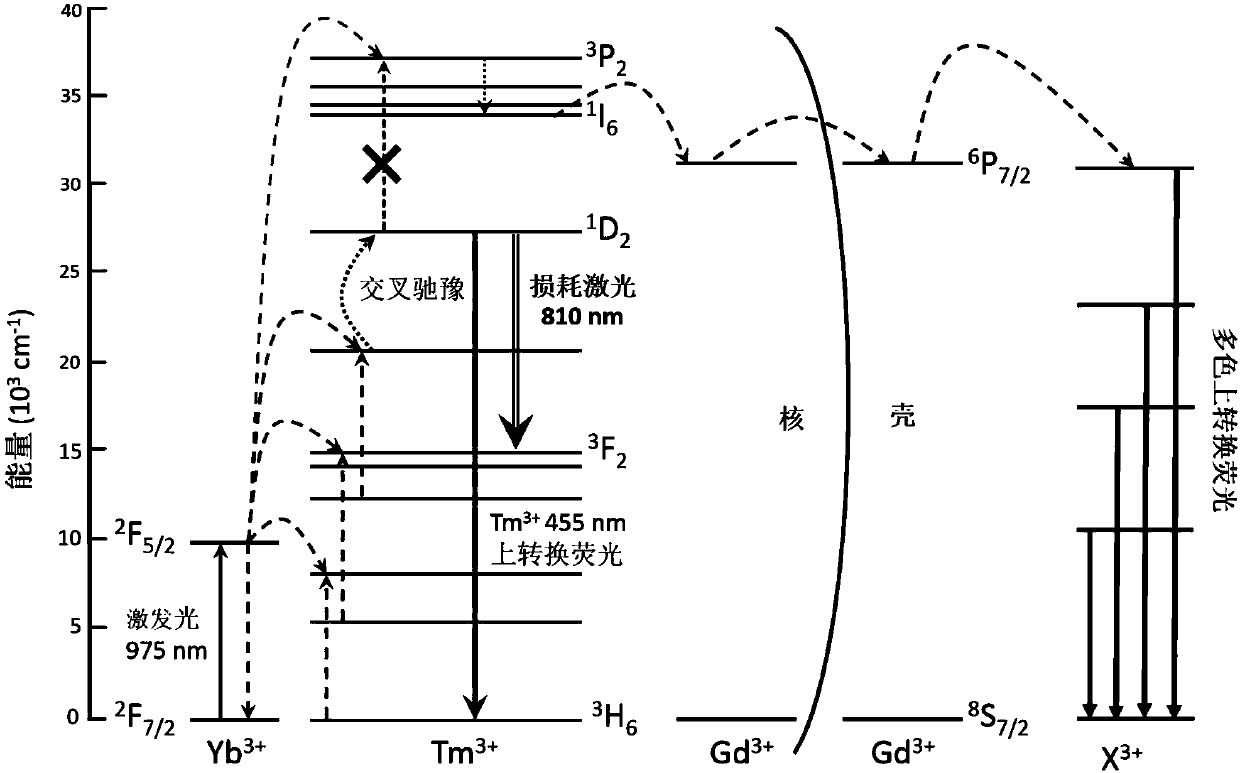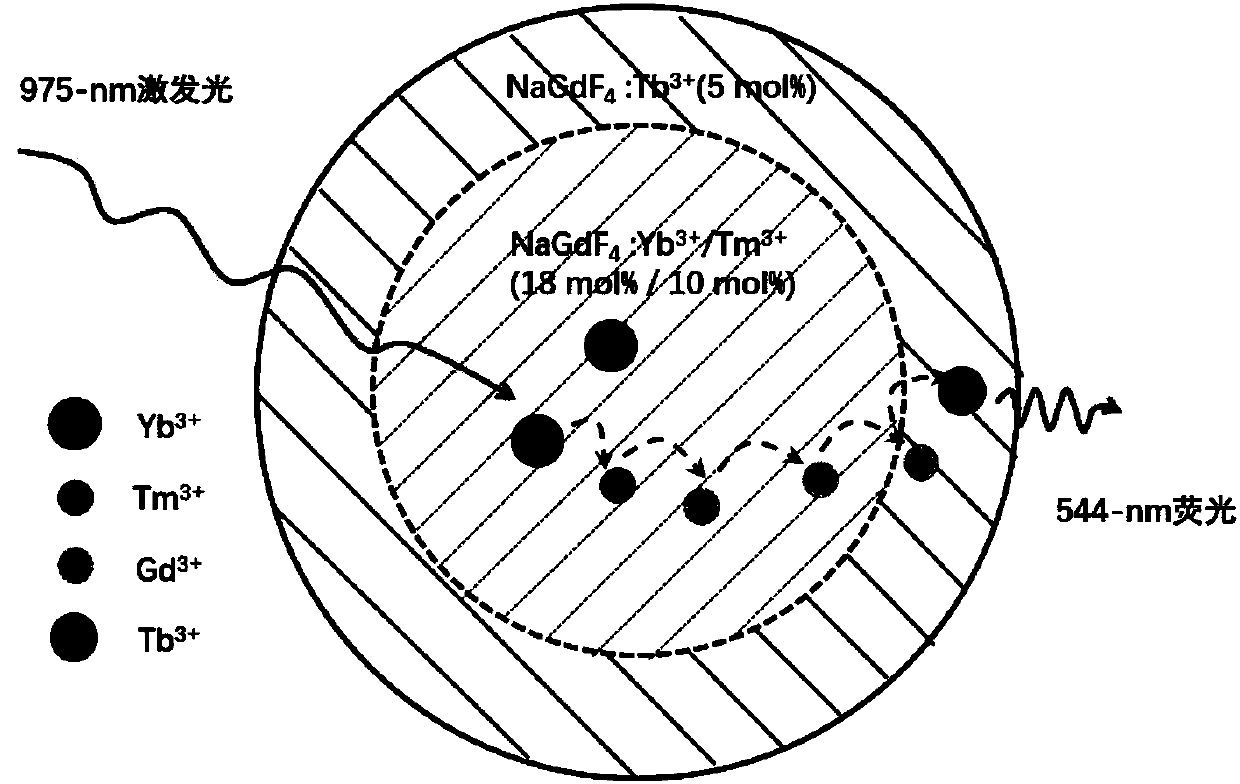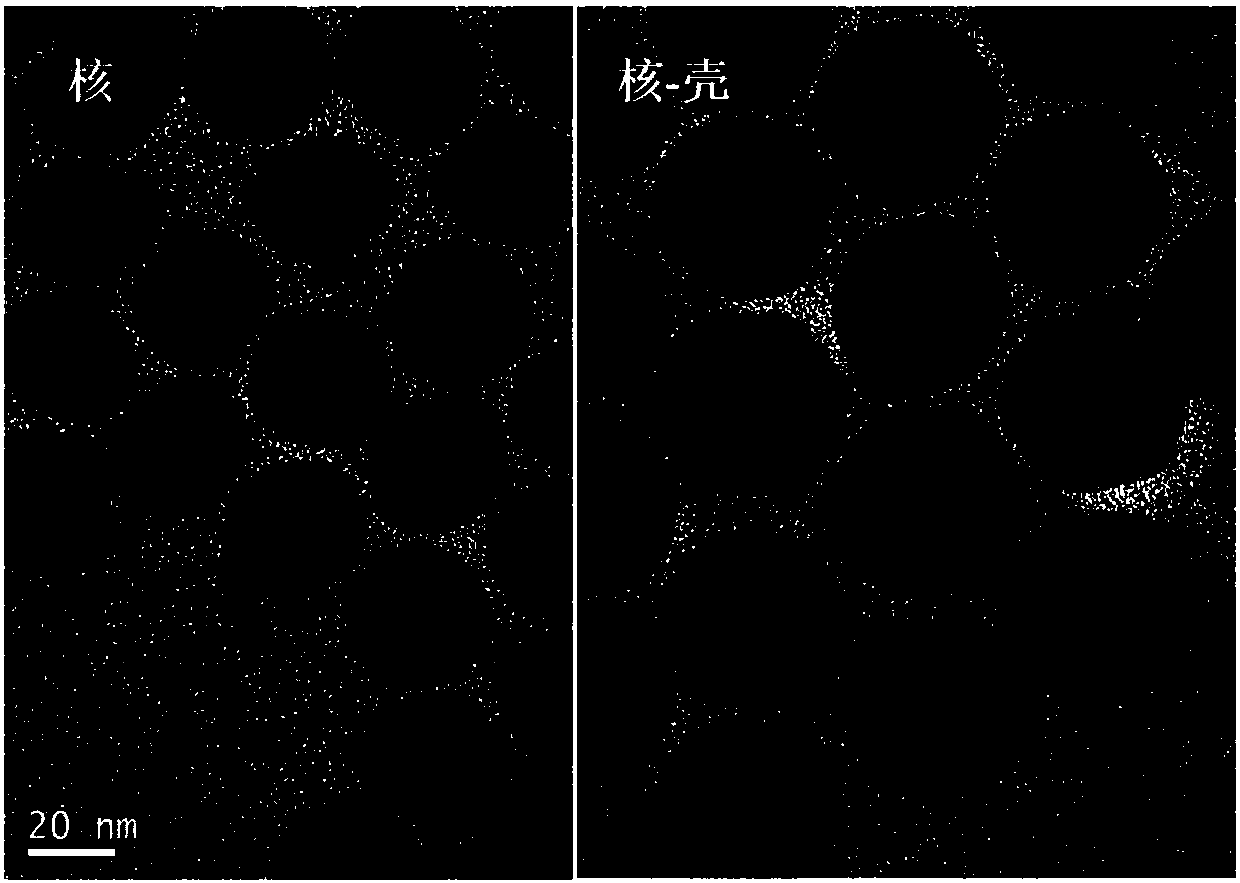Multiband fluorescence loss method, multicolor super-resolution imaging method and device
A fluorescence loss and multi-band technology, applied in the field of optical microscopy, can solve problems such as difficulty in achieving loss effect, lack of photostability, complex optical system, etc., and achieve long-term three-dimensional imaging and high-efficiency light control Loss, the effect of simplifying the optical path system
- Summary
- Abstract
- Description
- Claims
- Application Information
AI Technical Summary
Problems solved by technology
Method used
Image
Examples
Embodiment 1
[0042] see figure 1 , figure 2 , image 3 , Figure 4 , Figure 5 , the fluorescent nanoparticles in this example use Tb 3+ As an activating ion, while achieving Tm 3+ 455nm, 475nm and Tb 3+ 490nm / 544nm / 585nm / 620nm and other multi-band up-conversion luminescence and loss. Schematic diagram of the core-shell upconversion nanoparticle structure figure 2 As shown, its core is NaGdF 4 As a matrix, doped with 18mol% Yb 3+ Ion and 10mol% Tm 3+ ion. NaGdF 4 as the matrix, doped with 5mol% Tb 3+ as an active ion. Migration ion Gd 3+ As the medium of energy transfer, transfer energy from accumulated ions Tm 3+ The high energy level is transferred to the activated ion Tb 3+ , emit 490nm / 544nm / 585nm / 620nm and other multi-band up-conversion fluorescence. Electron microscope images of nanoparticles synthesized by solvothermal method image 3 As shown, the core particle size is about 20 nanometers, and reaches 35 nanometers after wrapping the shell.
[0043] see Figur...
Embodiment 2
[0054] For the two-layer core-shell structure in Example 1, some active ions are due to the partial energy level and accumulated ion Tm 3+ Matching can easily cause cross energy transfer, resulting in reduced luminescence efficiency of activated ions. This embodiment provides a three-layer structure to avoid such cross energy transfer, see FIG. 9( a ). Compared with Example 1, this example adds a layer of undoped NaGdF between the core and the shell where the active ions are located. 4 As an isolation layer, see Figure 9(b) due to the Gd 3+ of 6 P 7 / 2 The energy level is higher than the excited state of the activated ion used, and the isolation layer can effectively prevent the excited state from the activated ion to the Tm 3+ The cross-transfer of intermediate energy levels improves the luminous efficiency of multi-wavelength fluorescence.
Embodiment 3
[0056] Based on the synthesis of multicolor fluorescent nanoparticles and the multiband fluorescence loss method in Example 1, this example provides a multicolor super-resolution imaging method.
[0057] The method includes the steps of:
[0058] In the same way, a continuous fiber-coupled laser with a wavelength of 975nm is used to emit a stable near-infrared wavelength laser as the excitation light. After the laser is collimated, a Gaussian solid beam is obtained;
[0059] At the same time, in the other path, a continuous fiber-coupled laser with a wavelength of 810nm is used to generate a stable near-infrared wavelength laser as a near-infrared loss laser. After the laser is collimated, it is modulated by a spatial phase modulation plate corresponding to a wavelength of 810nm to form a hollow beam, thereby A hollow-core depleted beam is obtained; the wavelength of the near-infrared depleted laser conforms to Tm 3+ The energy gap corresponding to the case of stimulated radi...
PUM
 Login to View More
Login to View More Abstract
Description
Claims
Application Information
 Login to View More
Login to View More - R&D
- Intellectual Property
- Life Sciences
- Materials
- Tech Scout
- Unparalleled Data Quality
- Higher Quality Content
- 60% Fewer Hallucinations
Browse by: Latest US Patents, China's latest patents, Technical Efficacy Thesaurus, Application Domain, Technology Topic, Popular Technical Reports.
© 2025 PatSnap. All rights reserved.Legal|Privacy policy|Modern Slavery Act Transparency Statement|Sitemap|About US| Contact US: help@patsnap.com



